|
What we do at the Museum
|
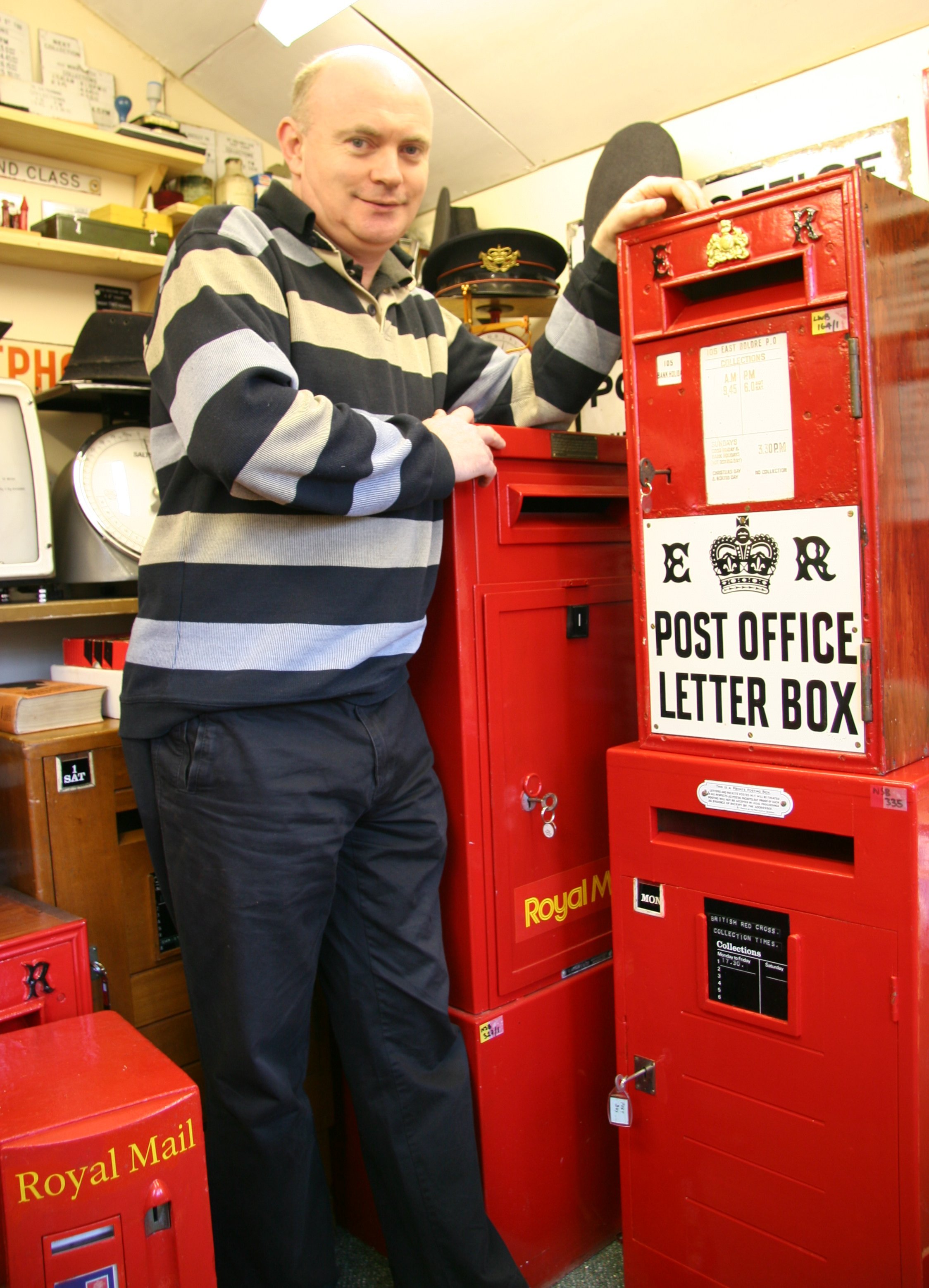
|
Preserving our history through the Post Box
.The Museum is really the brainchild of one avid collector, Steve Knight. He started collecting post boxes about 25 years ago having been fascinated by the differences between them for many years. A dedicated band of volunteers are on hand to help with the restoration work, but particularly the movement of larger exhibits into the Museum.
.Most boxes arriving here have been out of use for many years and are often damaged or in poor condition. We have to repair them to professional standards, replace missing locks and fittings and, if appropriate, fit a contemporary collection plate.
.Our 536 sq.ft. of covered accommodation provides dry storage for the oldest iron boxes, documents, delicate items such as the stamp machines, and of course the wooden-backed Ludlow boxes. The later cast iron boxes are displayed in the leafy setting of a suburban garden.
|
|
Restoration Projects
.As an example, here are two boxes as we found them lying in a yard. They had been out of use for more than 10 years and were in pretty bad shape. The black one is the GviR B wall box in the left-hand picture and the big A box behind it is the George V box you see here fully restored.
Many of our boxes arrive damaged and some need extensive rebuilding. This is especially true of the damage caused by fireworks.
|
 |
Recovering our George VI pillar from Whitehorse Ave in Halstead
.The box had been out of service for several months following damage by a firework. The broken door and cap were removed and quickly found their way into our care, but the heavy carcass had to wait for a RoMEC lifting team to bring in a replacement A size Machan pillar..
|
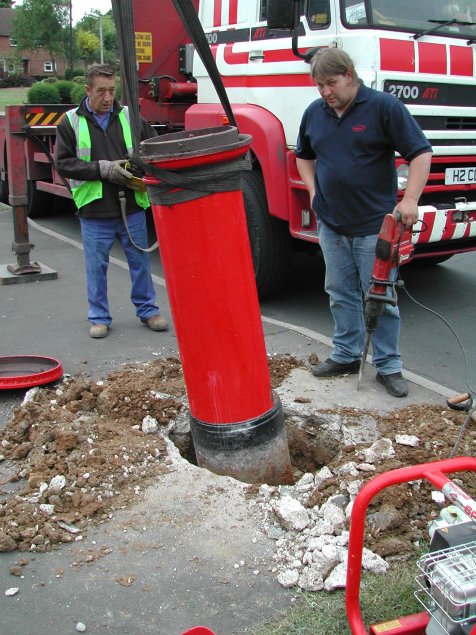
Having excavated around the box, RoMEC engineers begin to lift it clear .
|
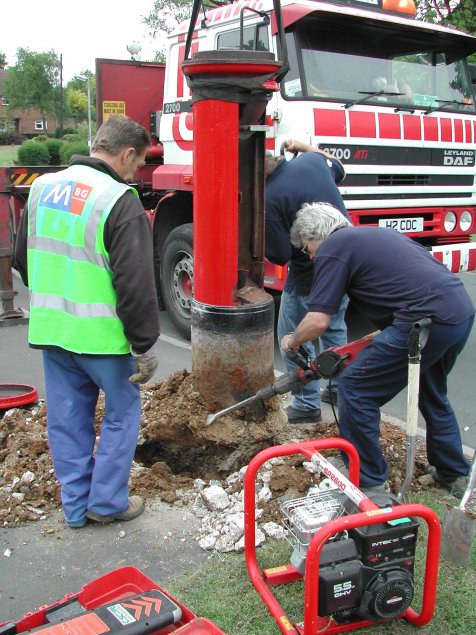
A power hammer is used to clear away as much of the embedding concrete as possible
|
|
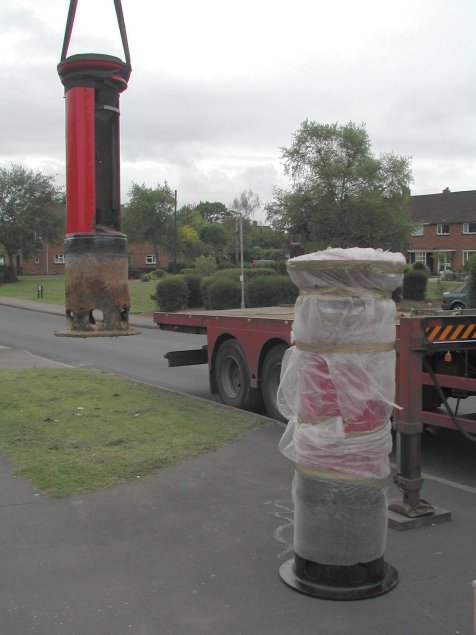
The old box, weight 380kg, is lifted on to a flat-bed lorry. In the foreground is the new Machan A size pillar that will replace it.
|
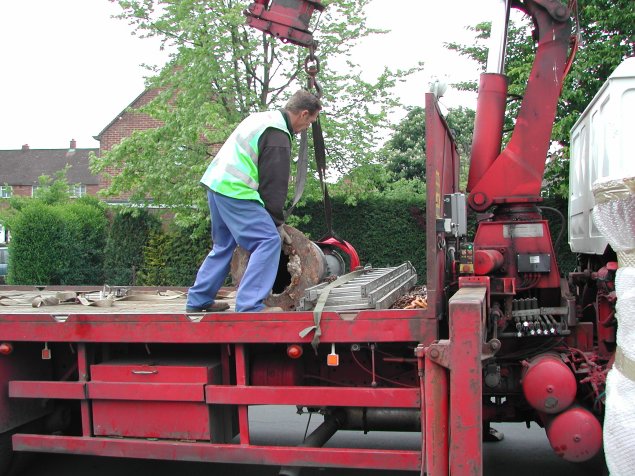
The box is fastened into position by the contractor, ready for the 1.5 mile journey to the Museum.
|
|
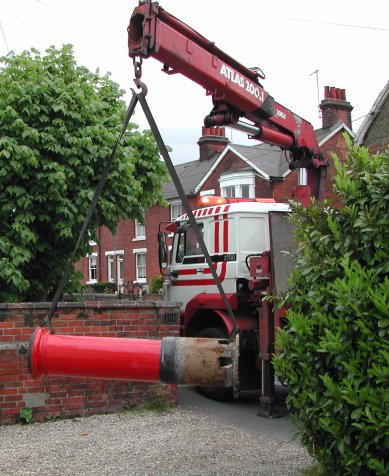
The new arrival is swung in to our forecourt on the Hiab arm. This arm can lift 4 tonnes at 9 metres.
|
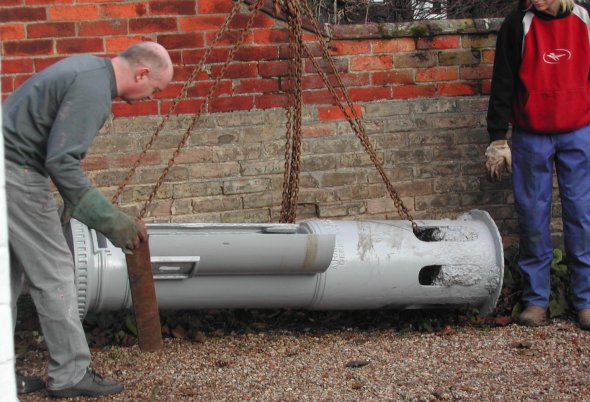
Also being carefully dropped on the drive is our PB11 Victorian Anonymous pillar box. This had come from Airblast, our regular bead blaster, and was complicated because we could not get the cap or door off. The bigger arm on this lorry will lift 4 tonnes at up to 18 metres - essential if we ever have to move house!
|
As you can see, moving post boxes is a specialised operation requiring great care and, preferably, lifting equipment. Each carcass weighs at least 350Kg (7.5 cwt) and that constitutes a four-man lift for safe handling. The grey box is an Anonymous VR pillar and had just come back from bead blasting. Most of our boxes are blasted after any repairs have been carried out. They then receive a coat of primer and two coats of transport finish urethane paint. Post Box Red is a British Standard colour, we get ours from T & R Williamson of Ripon, now a part of Thomas Howse Paints Birmingham, but other manufacturers can supply it including Chromadex, Mebon and Johnstones Paints.
A word of warning: do not try to put a large post box on a sack barrow as you will break your barrow if not your leg/foot/neck!
See more activities in the Museum| Schedule of Works for each box
|